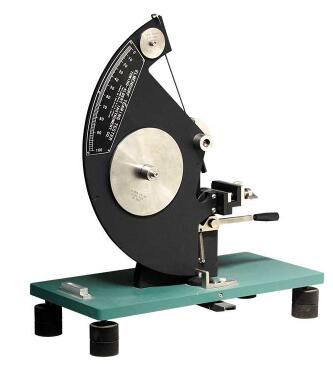
NewsInformation Center
Rubber tear resistance test method steps
2023/07/13
The rubber tear resistance test is one of the common methods to evaluate the ability of rubber materials to resist tearing under force. The following are the steps for performing a rubber tear resistance test in general:

1. Sample preparation:
- Preparation of rubber samples that meet specification requirements. The shape and size of the sample should comply with the corresponding standards or specifications.
- Samples are cut or prepared according to standard requirements, if required.
2. Test equipment preparation:
- Prepare a suitable tear resistance tester. The equipment should comply with the relevant standards and be able to provide the required test parameters and data recording functions.
- Install suitable grips or fixture systems to ensure stability and correct loading of the sample during the test.
3. Sample installation:
- Mount the sample in the grips of the testing machine. Make sure the size and location of the sample is as required by the standard or specification.
- Ensure that the sample is securely mounted in the grips to avoid movement or slipping during the test.

4. Test parameter setting:
- According to the requirements of standards or specifications, set the parameters of the testing machine, such as testing speed, loading method, etc.
- Determine the initial position and initial force value of the testing machine and perform calibration.
5. Start the experiment:
- Start the testing machine and make it run according to the preset parameters.
- The testing machine will gradually apply force to the sample to simulate the tearing process.
- During the test, make sure to record and monitor the data of the testing machine, such as load, displacement, time, etc.
6. End of test:
- Stop the test machine when the sample tears or when the specified termination condition is reached.
- Record the final load value, tear length and other test results.
7. Data analysis and reporting:
- According to the test results, calculate and analyze the tear resistance performance parameters of rubber materials, such as tear strength, tear energy, etc.
- Organize test results into reports, including sample information, test conditions, result data and analysis, etc.
It should be noted that the above steps are only the basic steps for rubber tear resistance test in general. Specific test methods and procedures may vary according to different standards, specifications or applications. Therefore, when conducting rubber tear resistance tests, reference should be made to applicable standards or specifications, and corresponding adjustments and operations should be made according to specific requirements.
Previous: What's the consequence of not calibrating the Atlas Xenon Lamp Aging Test Box?
N e x t : What's precaution for the operation of the knitted sweater pilling instrument?



